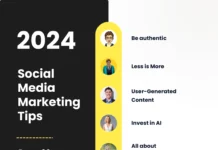If you are new to using social media for your business or brand, it can be a confusing process. Are you supposed to retain the same voice and tone you normally use in traditional media or on your website? Or are you supposed to alter it for a different medium?
Unfortunately, it really depends on your business and there’s not a “one size fits all” kind of answer for how to be authentic as a brand on social media. One approach that can set you in the right direction is audience segmentation.
There are a few ways in which you can go about segmenting your audience. This process sounds more daunting than it is, and it can be as simple or as complex as you would like to make it.
How to Find Your Audience on Social Media
Think about your existing audience. What is your audience like demographically? Are they young or old? What race? What are their consumer habits? What is their purchasing cycle like? This will give you a starting point. Unless your audience is not technologically savvy or tends to be an older group, your audience will likely be on social media as well.
Turn to Twitter and search engines to do some initial research about your ideal audience. Find keyword terms and phrases that relate to your business using Google Webmaster Tools, Google Analytics, and Twitter. Who is generally speaking about similar types of products or services to the ones you offer? Does this differ greatly from your existing audience?
Below you can see an image from my current Twitter audience, it tells you exactly what kind of followers I have. With this information I can adjust my content to ‘talk’ to them:

Tap into new channels. Perhaps your audience isn’t even on Twitter. If you are marketing to teenagers, they’re likely trying out new networks or building their own audiences on Instagram and Snapchat. That doesn’t necessarily mean that your brand will need to be on Instagram or Snapchat – but it’s important that you know who is using it and how.
Now that you know your audience segments – current customers, ideal customers, and future customers – you can consider how to shape your brand.
Brand authenticity is essential to performing well on the Web. Inconsistencies are caught very early on and noted. You’ll want to practice your tone and voice, ultimately building a set of guidelines for your community manager(s) and your marketing team as a whole. How does your message carry from website and traditional media to social media, which frequently takes up less real estate? You need to come up with a way to communicate your brand quickly and efficiently without sounding terse or glib. What’s the best way to do that?
Plan ahead. Create a structured plan for a week or a month for all of your social media networks. The plan will be different depending on the social media channel. Test it out and leave room for flexibility, engagement with your growing audience, and interaction with related brands. See which comments, tweets, posts, or images perform well, even from these initial stages.

Ask your audience. One of the best ways to go about building a social media presence is to ask questions and engage your audience. What does the customer want to see, and what does he or she like about your brand? What differentiates your brand?
Use visual content to amplify your brand. Almost every social media network has a visual component. When you go to plan your social media calendar, work to develop associated images to align with your branding and website. Make sure that they are visually appealing – if they engage the audience in the right time and way, your customers (or potential customers) may re-share with their followers.
As a small business, you may have limited resources to handle the demands of social media strategy, community management, brand alignment, or graphic design. Reach out to professionals in the field for advice or implementation to get you started on the right track.

See also: 11 Things That Successful Social Media Marketers Do Differently











